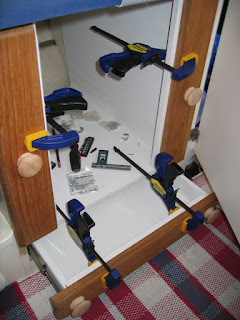First, let's talk about the really fun part: boating. The town of Poulsbo, on the Kitsap Peninsula, is our absolute favorite fall boating destination. Like Gig Harbor, Langley, Port Ludlow, and others, Poulsbo offers a great marina, the Port of Poulsbo, which has immediate walking access to shops, restaurants, and strolls down neighborhood side streets that make accessing land by water so much better than accessing land from land. Our routine is fairly evolved at this point
- Saturday: Arrive mid-afternoon on a Saturday, check out the shops, eat dinner at Mor Mor, then watch a DVD on the boat.
- Sunday: Make a leisurely bacon-'n-eggs breakfast, then head to Sluys Bakery for pastries that we'll eat at Hot Shots Java. The Admiral will go to the bead shop and I'll go to Cargo Hold, then we'll rendezvous back at the boat and begrudgingly leave around 2 or 3 pm.
However, this started to get interesting when I realized that you can link accounts like, say, YouTube. So I created a YouTube account and, if all was successful - which means you clicked the play button (little triangle) in the middle of the picture above, you just viewed a short clip of the Jenny G crossing the bow of a very large China Shipping Lines container carrier ship. Viva la Web!




















